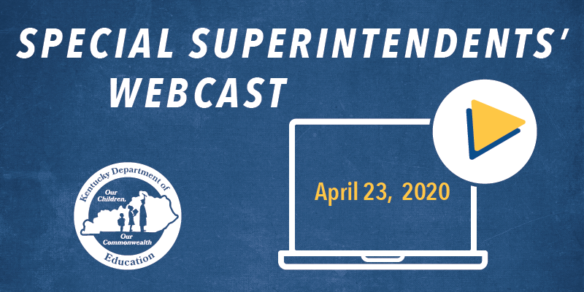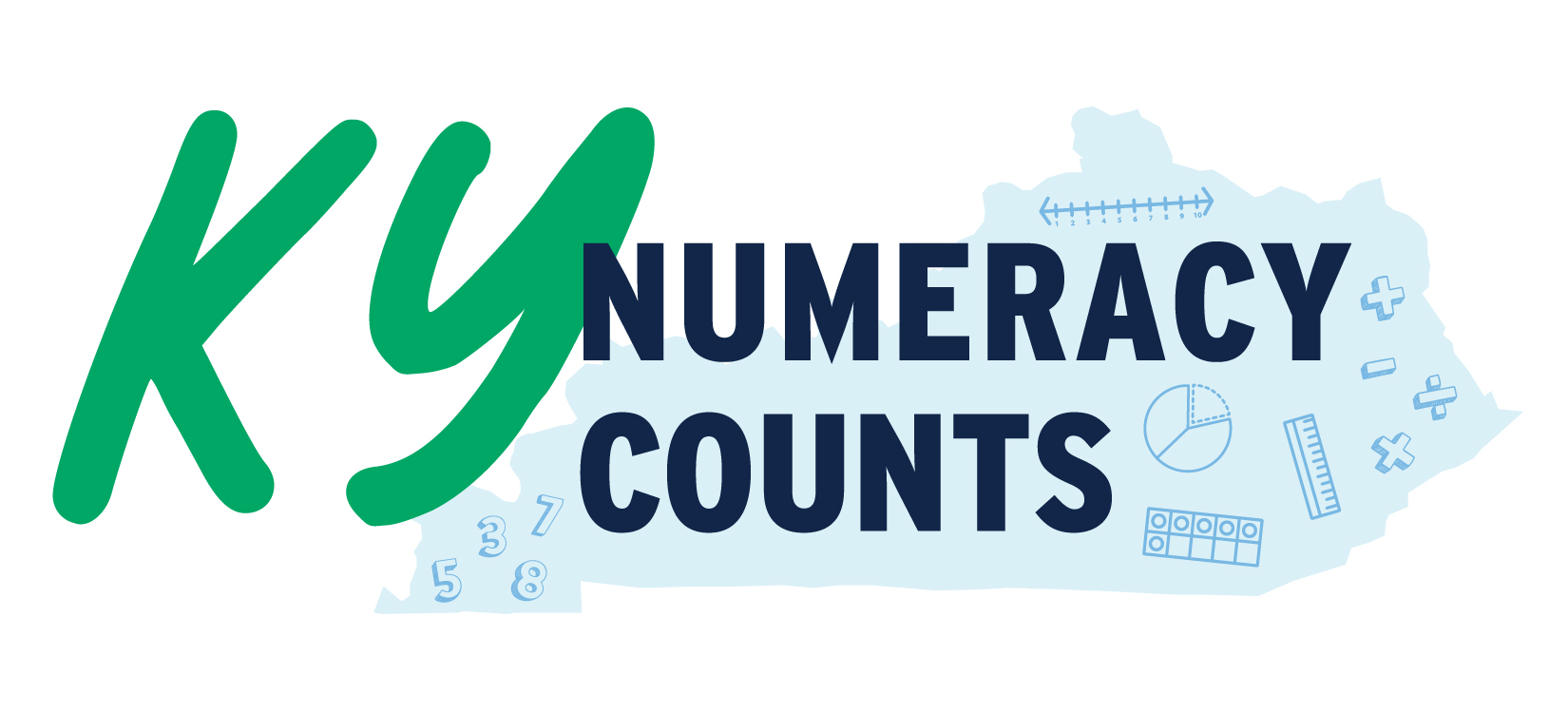
- Kentucky will receive about $223 million for K-12 education through the Coronavirus Aid, Relief and Economic Security Act.
- The U.S. Department of Education intends to review and approve states’ applications within three days in order to make the funds available to states as quickly as possible.
By Mike Marsee
mike.marsee@education.ky.gov
Kentucky’s school superintendents were told their districts will have a great deal of flexibility in determining how they spend most of the funding that will be available to them through the federal coronavirus relief package.
In a Kentucky Department of Education (KDE) webcast April 23, superintendents of Kentucky’s 172 school districts were given details about the emergency relief funding their schools will receive through the Coronavirus Aid, Relief and Economic Security (CARES) Act and how it can be used to address the impact the COVID-19 emergency has had on elementary and secondary education.
Robin Kinney, the associate commissioner in KDE’s Office of Finance and Operations, advised the superintendents to carefully consider how best to use the funds.
“We would encourage you to be as thoughtful as possible in how you’re going to use the funds and think about your long-term as well as your short-term needs,” Kinney said.
The CARES Act, which was signed into law March 27, allocates $30.75 billion in emergency education funding to states. Kentucky will receive about $223 million – an amount equal to about 4% of Kentucky’s annual education budget – for K-12 education from two sources:
- $193.2 million from the Elementary and Secondary School Emergency Relief Fund, which is intended to provide local education agencies with emergency relief funds to address the impact of COVID-19 on elementary and secondary schools.
- $30 million of Kentucky’s $43.8 million share of the Governor’s Emergency Education Relief Fund, which is designed to enable the nation’s governors to decide how best to meet their states’ K-12 and higher education needs.
The U.S. Department of Education (USED) has made the applications for both funds available to state education agencies, and USED’s goal is to review and approve applications within three days of their receipt in order to make the funds available to states as quickly as possible.
“The federal government, compared to how things usually go, is moving at light speed. They are moving really fast and making it relatively easy for states,” Interim Education Commissioner Kevin C. Brown told the superintendents.
Here are details on how local school districts will receive and can spend money from both funds:
Elementary and Secondary School Emergency Relief Fund
At least 90% of the $193.2 million Kentucky receives from this fund will go to districts, and that money will be distributed through the Title I-A funding formula. KDE anticipates that districts will receive an amount equal to about 83% of what they received in Title I-A funds in fiscal year 2019.
This fund has the most flexibility in how districts can use the money to meet their needs.
For example, the funds can be used for existing federal programs, resources that address individual school needs, educational technology for students, providing mental health services and supports, and activities to address the needs of low-income students, students with disabilities, English learners, minorities, homeless students and students in foster care.
Other examples of uses for the funds include preparedness and response efforts, planning for and coordinating long-term school closures, and training and professional development for staff members on sanitation and minimizing the spread of infectious diseases and the purchase of supplies for that purpose.
Funds also may be used for other activities necessary to maintain district operations and services and to employ existing staff members.
“This fund is really broad on what (districts) may spend their funds on,” Kinney said.
USED released the application for this fund April 23, and KDE will complete its application as soon as possible.
Governor’s Emergency Education Relief Fund
The $30 million earmarked for K-12 education in this fund is designated for school districts that are “most significantly impacted” by the coronavirus, but Kinney told superintendents they will advocate for all districts to receive funds from this pot of money.
“All school districts have been significantly impacted, so instead of trying to determine which districts have been most impacted, we are advocating for all,” she said.
Kinney said KDE is talking with the lieutenant governor’s office and the Kentucky Education and Workforce Development Cabinet about the most equitable way to allocate funds to districts.
Kentucky’s application will propose that these funds be used by districts to support remote learning and technology and district food services.
“Those are the two broad areas that we’ve seen as identified needs, and we’d like to put the $30 million toward those efforts,” Kinney said.
It is anticipated that the Education and Workforce Development Cabinet will apply to USED for the funds on behalf of the governor’s office in the coming days. The governor has one year from the receipt of the funds to make awards, and districts will have through September 2022 to use the funds they receive.
Pandemic Electronic Benefit Transfer program
Kinney briefed superintendents about the federal Pandemic Electronic Benefit Transfer program, which was created through the Families First Coronavirus Response Act that was signed into law March 18 to provide nutritional resources to families who are losing access to free or reduced-price school meals while school buildings are closed during the COVID-19 emergency.
The program would provide benefits for students who would receive free or reduced-price meals, including children who receive meals at no cost in a community eligibility provision school.
KDE is working with the Kentucky Cabinet for Health and Family Services (CHFS) to develop a state plan under which CHFS would administer benefits with collaboration and support from KDE. Once that plan is in place, information will be communicated to households regarding how to obtain benefits. The benefits are in addition to any food service districts are providing during the closure period.
Graduation plans
The superintendents also heard about a project KDE is undertaking to honor graduates in the class of 2020 at the request of Lt. Gov. Jacqueline Coleman. Superintendents and principals will be asked to submit photos of graduates that KDE will use in the project, which is still in the planning stages.
“The lieutenant governor really wanted to make sure that we are doing something at the state level to honor the class of 2020 because they are making tremendous sacrifices, and we wanted to celebrate their future,” Brown said.
Brown said KDE is developing a guidance document to help districts as they make decisions about how to hold graduations and proms while following social distancing guidelines that prohibit mass gatherings. Decisions on whether and how to conduct those ceremonies will be made at the local level.
KDE also announced that applications are being accepted for the 2020-2021 Commissioner’s Student Advisory Council, which provides feedback on critical issues impacting students and schools and works with KDE to develop ideas to improve and transform education.
The application period has been in the fall in recent years but is being moved to spring. The new council will hold its first meeting in June.
Eleven of the 22 members of this year’s council are seniors; sophomores and juniors serving on the council are eligible to return.
MORE INFO …
- April 23 Special Superintendents’ Webcast
- Kentucky Department for Public Health’s COVID-19 webpage
- KDE’s COVID-19 webpage
- COVID-19 Hotline (800) 722-5725




Leave A Comment